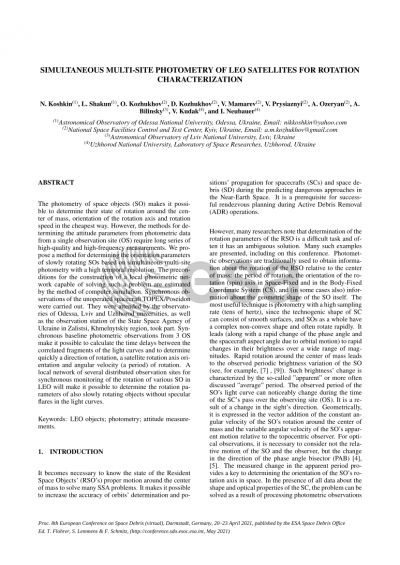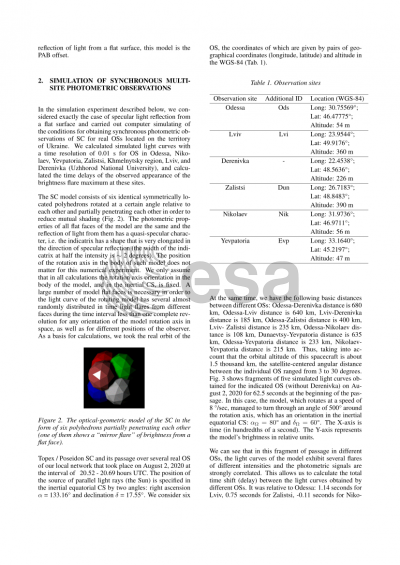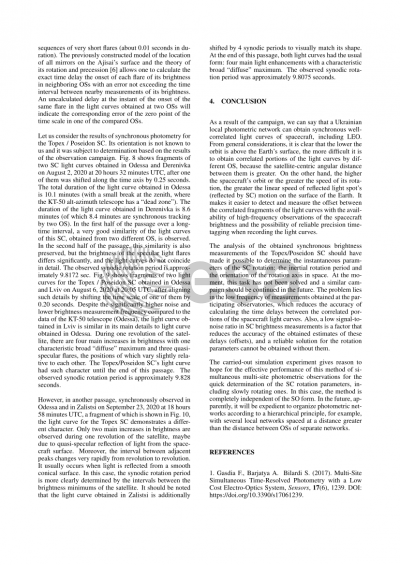Document details

Abstract
The photometry of space objects (SO) makes it possible to determine their state of rotation around the center of mass, orientation of the rotation axis and rotation speed in the cheapest way. However, the methods for determining the attitude parameters from photometric data from a single observation site (OS) require long series of high-quality and high-frequency measurements. We propose a method for determining the orientation parameters of slowly rotating SOs based on simultaneous multi-site photometry with a high temporal resolution. The preconditions for the construction of a local photometric network capable of solving such a problem are estimated by the method of computer simulation. Synchronous observations of the unoperated spacecraft TOPEX/Poseidon were carried out. They were attended by the observatories of Odessa, Lvov and Uzhgorod universities, as well as the observation station of the State Space Agency of Ukraine in Zalistsi, Khmelnytsky region, took part. Synchronous baseline photometric observations from 3 OS make it possible to calculate the time delays between the correlated fragments of the light curves and to determine quickly a direction of rotation, a satellite rotation axis orientation and angular velocity (a period) of rotation. A local network of several distributed observation sites for synchronous monitoring of the rotation of various SO in LEO will make it possible to determine the rotation parameters of also slowly rotating objects without specular flares in the light curves.
Preview









